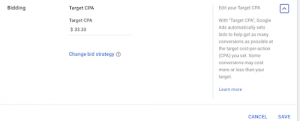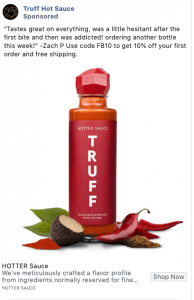— July 18, 2018

Free-Photos / Pixabay
You’ve spent months planning out your new business, and now it’s time to think about creating a marketing plan for your launch. For a small business start-up, marketing budgets are often tight and there is no room for big advertising campaigns. There is also no scope to work with a celebrity to endorse your product and convince the public to buy. So, without a big advertising campaign, without celebrity endorsements, and without much money to spend on digital ads, how can you still make a big impact and launch your new brand successfully?
Have you considered social media influencers?
Influencer marketing is a topic that’s growing in popularity, mainly because it’s a successful way for marketers to spread a brand’s message without relying on more traditional advertising methods. In case you’re not aware, an influencer is an individual with a large enough following to have the power to influence and affect purchasing decisions or lifestyle habits.
In other words, they are individuals with a substantial enough following on social media that their opinion counts for something, and if they advocate for a particular brand their loyal followers are likely to respond by purchasing from the same brand.
Many brands have found that by partnering with influencers and allowing them to spread their brand message, they are able to tap into an already engaged and loyal following, making for some pretty impressive results. Influencers have been known to cause brands to completely sell out of stock, simply with one positive Instagram post.
Is your business right for influencer marketing?
There is a common misconception that because influencers live mostly on social media channels, that therefore influencer marketing is for those businesses targeting younger audiences, or particularly for B2C lifestyle brands. However, the stats tell a different story.
YouTube, where many influential vloggers make their mark, boasts over 1.57 billion monthly users, and adults in the 35+ and 55+ age category are the platform’s fastest growing demographic. Instagram, where influencers are most prominent, is increasingly adopted by an older demographic, with 33% of users aged between 30-49 and 18% between 50-64.
Similarly, as much as influencers may live on social media platforms, many have made their mark by blogging, and for every industry there is sure to be a large group of influential bloggers.
So, ‘is your business right for influencer marketing?’ the answer is a resounding yes! It’s just a case of figuring out which type of influencer is best suited to your brand and what you’re trying to achieve.
The cost of working with influencers
Influencers come in all shapes and sizes, and costs can vary dramatically. Micro influencers tend to have a small but loyal following, mid-tier influencers boast a larger but still loyal following, while top-tier influencers boast celebrity-like status across social media.
For example, when working with a micro influencer with 3,000 loyal followers, it could be as simple as offering free product in exchange for a positive and honest testimony. Whereas a top tier influencer with millions of followers may demand over £15k for a single Instagram post.
It’s a good idea for a small start up with a limited budget to create solid and positive relationships with many micro-influencers, rather than go for the top-tier influencers which will demand a large chunk of the budget. However, a good influencer campaign should be about more than just exchanging money for an Instagram post, it should be about building long term positive relationships with brand ambassadors who will spread your message to an already engaged and loyal audience.
Creating an Influencer Marketing Launch Plan
Like most things in marketing, there is no one-size-fits-all. Every business is different; therefore every plan should be tailored to that business. In another article, I wrote about how to create an Influencer Marketing Campaign with step-by-step guidelines and these steps can be applied to a launch plan too.
Start by identifying:
1. Launch objectives
2. Target audience
3. Key message
4. Budget
Once you have identified the above in detail, it should paint a pretty good picture on where to go next. Your next move is to identify which influencers you want to work with and make a connection with them. This could be as simple as sending them a message via Instagram, Twitter, email etc. Or it could be as detailed as using a piece of software like TapInfluence to find, vet and manage your influencer relationships.
Finally, once all the above is complete, make sure you work with your influencers and give them some creative freedom to express your message in their own words. Don’t dictate how and when they should tell their audience about your brand but give them the information they need and let them decide how to tell your story.
Better yet, if you’re launching a product, why not host an influencer event? Invite relevant local influencers to the launch of your product, tell them about your product face to face, get to know them in person, offer free samples and request that they post a positive message to their audience if they like your product. This will likely help create long-lasting bonds between your brand and the influencers, ensuring that they remain loyal to your brand and continue to spread your message.
If hosting your own event is beyond the scope of your budget, you can host virtual events (why not experiment with Periscope, Instagram Live video or Facebook Live to stream an event in real-time), or partner with an existing event.
Wherever your budget can take you, the options with influencer marketing are vast and there are no limits to how creative you can get. A good influencer marketing plan will get your brand in front of your target audience in a genuine way, where they’re likely to pay attention to the message and want to find out more. So, don’t hesitate, get started with your influencer launch plan today.
Business & Finance Articles on Business 2 Community
(135)
Report Post





